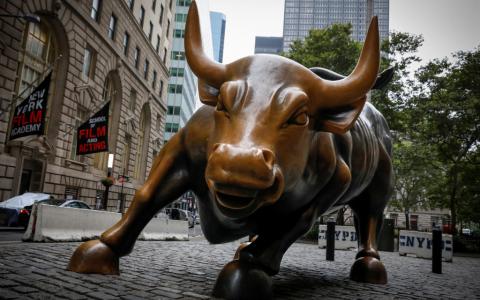
The strongest market in decades has left most of the big banks behind. Some of the best-paid people on Wall Street are out of touch with reality. Others are right on track.
Here we are, digesting one of the best rallies in generations, and a lot of forecasters say the bulls have even more room to run.
After all, the Fed remains our friend, with lower interest rates compensating for stalled earnings. The trade war is receding into the background, taking risk aversion with it.
And while stocks are on the rich side now, history proves bubble valuations can stretch a whole lot farther before they finally burst.
The bulls will run as long as they can. Telling investors to retreat to the sidelines cheats them out of intervening upside and leaves them vulnerable to worse long-term outcomes.
But that's what most of Wall Street’s biggest banks are doing right now. Go through a list of nearly two dozen numerical targets for the S&P 500 and the vast majority of strategists say the market is going down this year.
Bank of America, Barclays and Jefferies did their math and concluded that we’ve already hit the peak, give or take a few points. Morgan Stanley and UBS are still quoted saying the S&P 500 is headed back to 3,000 in the next 11 months.
That’s effectively calling a correction. Anyone who takes them seriously is already crowded into safe havens waiting to come out and buy that dip.
Even the bulls are keeping client expectations under tight control. Credit Suisse, JP Morgan, Citi, Goldman . . . maybe there’s 3% left in the rally. Only Piper Jaffray sees a normal (8%) year ahead.
They’re all working with the same data. They just get widely different results. And of course they’ll recheck the calculations when it becomes clear that something is wrong.
UBS, for example, has spread the 3,000 target for normal market conditions while acknowledging that the Fed changes the game. Price multiples can easily swell to 20X earnings they say, in which case their target will be left in the dust mighty fast.
I think that’s the right direction to take right now. When statistically reality snaps back, the math says the market is worth about 10% less than it is now. It’s overvalued.
But statistical reality can bend for a long time before it breaks. The only difference between a high-conviction contrarian position and a purely irrational bet is timing.
Even Bob Shiller acknowledges that. Calling the start of a bubble doesn’t take any expertise. There’s always another bubble lurking in the future. Every bull run ends.
Calling the burst is the hard part. A lot of people on Wall Street are doing that now, in defiance of all the animal spirits in play.
Direction, not speed
And in the longer view, fixating on the top hurts everyone. There is no ultimate S&P 500 peak. The long trend still points up at a comfortable slope of 10-11% a year.
Remember doing the math in the wake of 2008-9? After we factored in those apocalyptic results, large-cap performance across generations still reflected the same numbers it did in 2006-7.
Average out the booms and busts and stocks have found the fuel to rally 10-11% a year. On that basis, the last five years have been right on track with statistical reality.
The last two years have been all over the map but average out to about 9% a year. We’re still working off a little of the burn from the 2018 correction, making up for lost time.
Meanwhile easy liquidity keeps raising the roof. Trades that looked crowded 18 months ago can keep accepting that easy money. Prices climb.
We can evaluate the degree to which the market has become “irrational.” We can even shake our heads and roll our eyes.
But this is market reality as long as it lasts. Hoping it will go away it cheats investors out of their most precious commodity: time.
I’ve hedged volatility in the past. It was a time bomb. The crash never came and we folded.
That’s why I prefer forecasts that aren’t completely quantified. There’s no strict target. State Street just released one of those. I love reading these. Send me more.
State Street lays out the macro outlook and weigh the potential shocks on both sides. In their view, stocks are still the place to be this year. Great arguments, realistic but open to alternatives.
It’s still a fundamental-driven model. There’s a lot of math behind the language. But balancing the unknowns against the facts on the table, State Street is still overweight equity.
We all are. In a world where the Fed is letting inflation nudge above interest rates, betting on bonds or cash is the best way to lock in purchasing power deterioration.
You’re locking in at least a little loss there in order to lock out the risk of bigger losses. Effectively, you’re paying the Treasury for peace of mind.
Other investors would rather not lock out the upside, even if it means accepting the prospect that news flow will go against the market this year.
If risk is the big question, there’s always annuities. But I think the big banks are still fixated on returns even if their math doesn’t see a lot of upside here.
Maybe they should apply a form of Monte Carlo to the institutional market and tell us what the odds of a good or bad year will be, while leaving the percentage returns to the future to decide.



